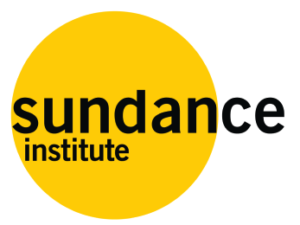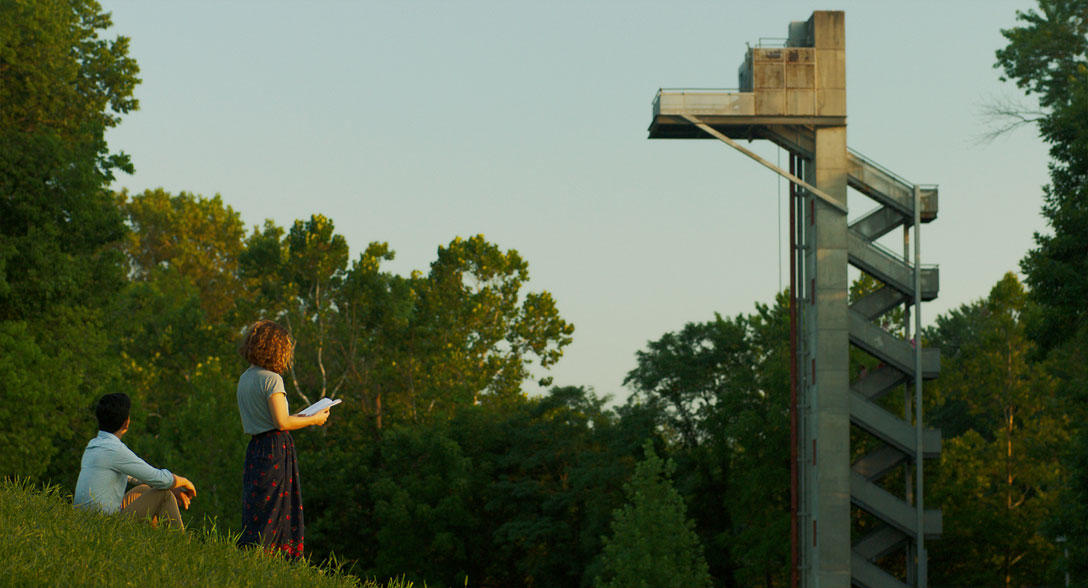Film Still: “Columbus”
Nate von Zumwalt
After eschewing traditional distribution offers following their run at the 2017 Sundance Film Festival, the team behind Columbus opted to self-release their feature film with the support of the Sundance Institute Creative Distribution Fellowship (more on that here). The ongoing shifts in distribution, including new digital opportunities for film and television, have led creators to take a closer look at their options before jumping at the first distribution offer. And where a traditional deal may lighten the load on the filmmaker, it also calls into doubt the team’s creative control with the film moving forward.
On the heels of announcing the first-ever Creative Distribution Fellowship case study, we’ve distilled down the filmmakers’ takeaways from their yearlong self-release process. Wherever you are in your filmmaking journey, these tips for exploring creative distribution are bound to help you ask the right questions and determine your best avenue for success.
When Considering Creative Distribution…
- If you’re thinking about self-distributing your work, start to form relationships early that can help you with the release of your film (such as PR teams, theatrical bookers, digital marketing consultants, and theater owners).
- Before you sign any contracts, think about how those deals can potentially affect other areas of your release (e.g., a mandatory theatrical window, holdbacks).
- If you’re thinking about pursuing creative distribution, think of creative ways to structure agreements (e.g., can you re-appropriate income and reinvest it?).
- Understand that it takes a team of people to creatively distribute your film. Make sure the team of people working with you understand the duration of the distribution process; it’s almost a full-time job for multiple people. Creative distribution doesn’t end after your theatrical or digital release, and someone needs to manage it through to the end.
- If you’re considering creative distribution, structure your production budget to account for P&A budget and expenses.
Theatrical Releases
- For independent releases, theatrical takes a lot of time and resources and provides a modest return in terms of the profit margin, though it does help with press awareness. Columbus is a rare example of theatrical success, as it yielded a 38% profit margin and remains their largest revenue stream.
- If you’re pursuing a theatrical release, understand the limitations that come along with that windowing.
- Independent theaters have different splits and reporting is often vague. Work with your theatrical booker to really understand how each independent theater operates and what their associated costs are.
- Do your research and try to get as clear an understanding as possible about the deliverables necessary for your release. Throughout the course of your release, you’ll need to provide many different kinds of deliverables, and they’re often needed on a fast turnaround and need to be budgeted.
- The team noted that if the P&A spend had been recoupable, or if it had been an equity investment rather than grants and gifts, they would have capped their expansion to 50 theaters.
- Don’t chase after revenue from a wide theatrical release. Unlike Columbus’ theatrical success, oftentimes the cost/benefit of a theatrical release shows diminishing returns. Look at comps as well as revenue and cost projections before diving into a wide theatrical release.
Constructing Your Budget
- Make sure you always budget for contingency—when portions of your release start to do well and expand, you’ll need to spend more money.
- Working with good PR agencies is expensive; you don’t just need one person but a team in multiple markets. If your distribution success relies on good press, make sure you budget accordingly.
Digital Marketing and Promotional Material
- For digital marketing campaigns, it pays to think from the beginning about how you’re going to keep your channels fresh and engaging. Try out different forms of media to see what works best, and keep rotating creative elements to keep it fresh.
- Always take time to capture behind-the-scenes content, because it helps to have this to pull from when promoting the film.








